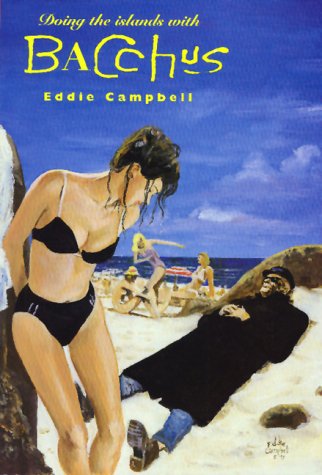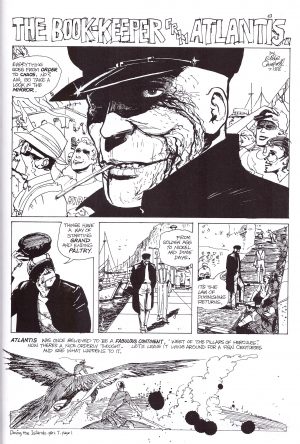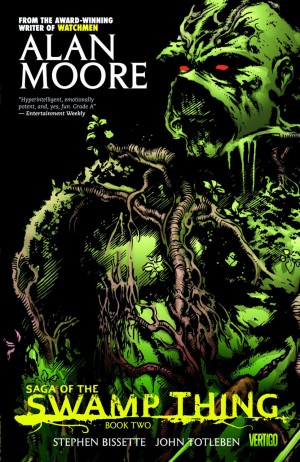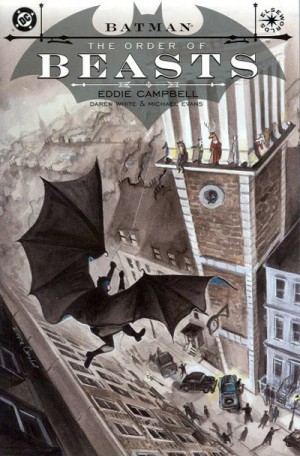Review by Graham Johnstone
The first two volumes of Bacchus launched Campbell’s 1980s take on Greco-Roman Gods in the modern world, but focussed more on other characters than Bacchus himself. This third volume puts the God of revelry himself centre stage, at least as master of ceremonies and raconteur, spinning tales from the myths. It’s a set of episodes of different lengths, collated from various anthologies, and first collected by Dark Horse.
It’s the late 20th Century, and Bacchus and the few surviving Olympians have realised they are not in fact immortal. They’re just long-lived, and this is their latter days. ‘Joe’ Theseus and the Eyeball Kid pursue old scores, power and survival, as recounted in Immortality Isn’t Forever and The Gods of Business. Bacchus though, is less concerned about the future – preferring to enjoy a wine-fuelled present, brimful of memories of a sometimes glorious past. He and his human pal Simpson ‘do’ the Greek islands, exploring as they go, their local stories within the ancient mythology.
It starts with Bacchus filling us in on Simpson’s unexpected backstory. Although human, Simpson infringed on the gods and their domains, and Bacchus engineered his escape. A Classics scholar and wine connossieur, Simpson is the perfect foil and sidekick. Bacchus loves to tell stories from his life and world, and Simpson loves to listen and collect them. It’s also a popular device to have a more ordinary character alongside more fantastic ones. Also in this book is Hermes, Greek God of communications and exchange. In the 20th Century he’s a denim and leather clad 1950s style ‘rocker’.
Campbell has a rich source of material to draw on, and is himself a great raconteur, so it rarely fails to be both entertaining as well as informative. When Simpson recounts the ramblingly erudite 24 pages of ‘Last of the Summer Wine’, however, it starts to feel like an endless list of names and factoids. This is Campbell, the knowing writer depicting a school teacher talking. Simpson downplays himself, then cheekily claims to have “collected” parts of a catalogue of classical statues, like the famously missing arms of Aphrodite…
There’s an ‘I was there’ realism to Campbell’s depictions of the present day islands. Mani and Skopelos in particular look drawn from apartment balconies.
As before, there’s a mix of brilliant and weak panels. The early urban scenes use stick on dot tones like Campbell’s earlier Alec, and have a similar photographic impressionism. Most of it is rendered in a dip pen style that points towards his later work with Alan Moore on From Hell. There’s a looseness to his pen work unusual in comics, and closer to cartoonists like Jules Feiffer or Charles Schultz, or even the drawings of say Van Gogh. The art’s often weaker on the mythical scenes, where he can’t work from observation, particularly large action scenes. However, it doesn’t distract too much from the stories and their brisk narration.
The encounter with ‘Tam O’Shanter’ from the Burns poem, is a collaboration with Steve Bissette, who appears to have drawn the supernatural elements. His fluid black lines on stark white, sit well on Campbell’s pen-hatched tones.
This is very different from the first two volumes, indeed unlike much in comics. It should appeal to anyone interested in myths, stories and the telling of them, or even just Greece and its islands.





